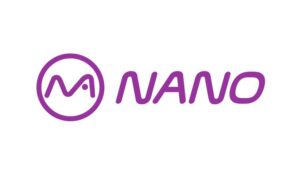Unlocking the Metaverse: Real Use Cases Beyond the Gimmick

The metaverse: Beyond Hype to Real-World Applications
Understanding the metaverse‘s Evolution
The concept of the metaverse has gained significant traction in recent years, often characterized by extravagant product launches and corporate rebranding efforts. This vision of continuous virtual environments where individuals can engage in various activities has intrigued the public. However, many critics dismiss it as merely a marketing ploy or a niche for gamers and tech enthusiasts.
- Understanding the metaverse‘s Evolution
- The Initial Hype and Its Consequences
- Defining the metaverse
- The Impact of Blockchain and Web3
- Current Real-World Applications
- 1. Education and Training
- 2. Remote Work Collaboration
- 3. Immersive Commerce
- 4. Cultural and Social Experiences
- 5. Digital Identity and Self-Expression
- Challenging the Gimmick Narrative
- Key Insights
- Conclusion
This perspective overlooks a crucial reality: the metaverse is not just a passing trend; it represents a technological framework that is still developing. What truly matters is not its current state but its potential to transform our digital experiences in the future, especially when integrated with Web3 and decentralized technologies. The metaverse‘s ongoing transformation is already revealing practical applications across multiple industries.
The Initial Hype and Its Consequences
The first wave of excitement surrounding the metaverse came with grand promises, including:
- Revolutionary virtual meetings that would replace traditional office environments and drive business growth.
- Avatars that would serve as our digital representations in all facets of online life.
- A rush of brands entering the space with NFTs and virtual real estate.
However, as noted by Alessio Vinassa, an entrepreneur in the Web3 sector, “When new technology is presented as a substitute for the old, it often leads to disappointment. The metaverse aims to enhance our digital experiences through ownership and immersion, not to replace reality.” The issue was not with the concept itself but rather with its implementation. The metaverse did not fail; it simply wasn’t fully developed.
Defining the metaverse
At its essence, the metaverse can be described as:
- A network of immersive virtual environments
- Persistent and interoperable (in theory)
- Enhanced by technologies such as AR/VR, AI, and blockchain
- Social, interactive, and increasingly programmable
It transcends superficial avatars and cryptocurrency speculation, focusing instead on creating digital spaces where individuals can work, learn, collaborate, and express their identities while retaining control over their data and digital assets.
The Impact of Blockchain and Web3
Decentralization provides the metaverse with a sustainable foundation that closed systems cannot offer:
- NFTs facilitate ownership of digital assets, including avatars, virtual land, credentials, and more.
- DAOs enable transparent governance of virtual communities through collective decision-making.
- Smart contracts allow for programmable economies within immersive platforms.
- Interoperable identities ensure that users are not confined to a single platform like Meta or Roblox.
In summary, Web3 empowers users not just to participate in the metaverse but to co-own it. As Alessio Vinassa emphasizes, “Digital spaces lacking ownership are akin to digital prisons. Decentralization grants the metaverse its freedom and future.”
Current Real-World Applications
While much of the media focus has been on gimmicks, genuine utility is emerging:
1. Education and Training
Educational institutions and businesses are leveraging metaverse environments for:
- Virtual laboratories and simulations
- Immersive language acquisition
- Training in soft skills, such as empathy through VR experiences
For instance, medical schools are utilizing VR to simulate surgical procedures, enhancing educational outcomes.
2. Remote Work Collaboration
Instead of monotonous video calls, 3D environments facilitate:
- Team meetings with shared spatial awareness
- Collaborative whiteboard sessions and design prototyping
- Persistent workspaces that replicate physical office settings
Companies like Microsoft are investing in this intersection of extended reality (XR) and productivity.
3. Immersive Commerce
Retailers are exploring:
- Virtual showrooms
- Digital try-on experiences using AR/VR
- metaverse-native products linked to real-world benefits via NFTs
This approach emphasizes experience-driven shopping rather than mere gimmicks.
4. Cultural and Social Experiences
Art exhibitions, film festivals, and concerts are taking place in metaverse spaces, particularly on platforms like Decentraland and Spatial. These events often incorporate NFT ticketing, digital collectibles, and interactive audience engagement.
5. Digital Identity and Self-Expression
The metaverse allows individuals to explore their identities, cultures, and interests in ways that the physical world may restrict. Blockchain technology adds permanence and ownership to this expression, evolving beyond simple avatars to encompass full digital personhood.
Challenging the Gimmick Narrative
It’s easy to dismiss the metaverse as a fleeting trend. However, significant technological advancements are quietly developing behind the scenes:
- The internet in 1995 appeared trivial.
- Smartphones seemed unnecessary until applications redefined their utility.
- Cloud computing was considered “too abstract” until it became foundational.
The metaverse is currently in its infrastructure phase, laying the groundwork necessary for future growth.
As Alessio Vinassa articulates, “The question isn’t whether the metaverse is overhyped; it’s whether we are asking the right questions. Who builds it, who owns it, and who benefits?”
Key Insights
- The metaverse is not merely about flashy graphics; it focuses on immersive, interactive, and enduring digital experiences.
- Real-world applications in education, work, commerce, and culture are already demonstrating value.
- Web3 fosters user ownership, identity, and governance within the metaverse.
- While skepticism is warranted, equating early missteps with failure is shortsighted.
- Visionaries like Alessio Vinassa are steering the metaverse towards sustainable, human-centric design on a global scale.
Conclusion
Although the metaverse may have initially over-promised, it is far from a failed venture. It represents a long-term shift in infrastructure that redefines how we connect, learn, work, and create in digital realms. With decentralization as its backbone and tangible use cases emerging, the metaverse is evolving into something profoundly significant.







